Italian Jewelers’ Two-sided Approach on Display at VicenzaOro: Maximalism Versus Accessibility
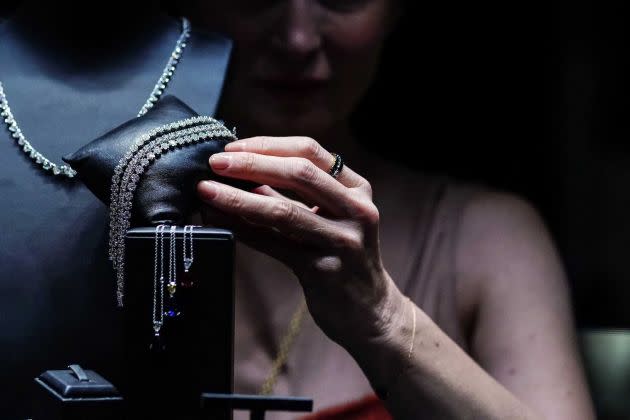
VICENZA, Italy — Like any other fashion-leaning industries, jewelry is in a state of flux.
Niche and smaller players, some with moderate international footprints, are competing against the sector’s juggernauts, trying to dodge the havoc wrought by the inflation-induced deteriorating economy, albeit on the heels of strong momentum in 2022, and fine-tuning strategies to gain market share.
More from WWD
At the five-day VicenzaOro trade show jewelry ended Sept. 12, executives were cautious, but optimistic as footfall at the fair increased 6 percent compared to last year. In the first five months of the year, sales rose 9.3 percent to 4.36 billion euros compared to the same period in 2022, according to figures released by Confindustria Moda’s research center on behalf of the national jewelry association Federorafi.
Although this growth paled against the double-digit increases registered last year, show director Marco Carniello described it as a “natural adjustment.”
“It’s rather a good ‘break’ that will allow companies and jewelry manufacturing districts to adapt to the number of investments made to keep up with demand, laying the foundation for future organic and sustainable growth,” he said.
Roberto Coin, president of the Vicenza-based namesake company, agreed. “Luxury is on a roll, over the past three years [the sector’s] performance has been good. My task here is to bulletproof the company for when business is lagging behind,” he said, highlighting the brand’s retail strateg,y which entails flagships and franchised monobrand boutiques.
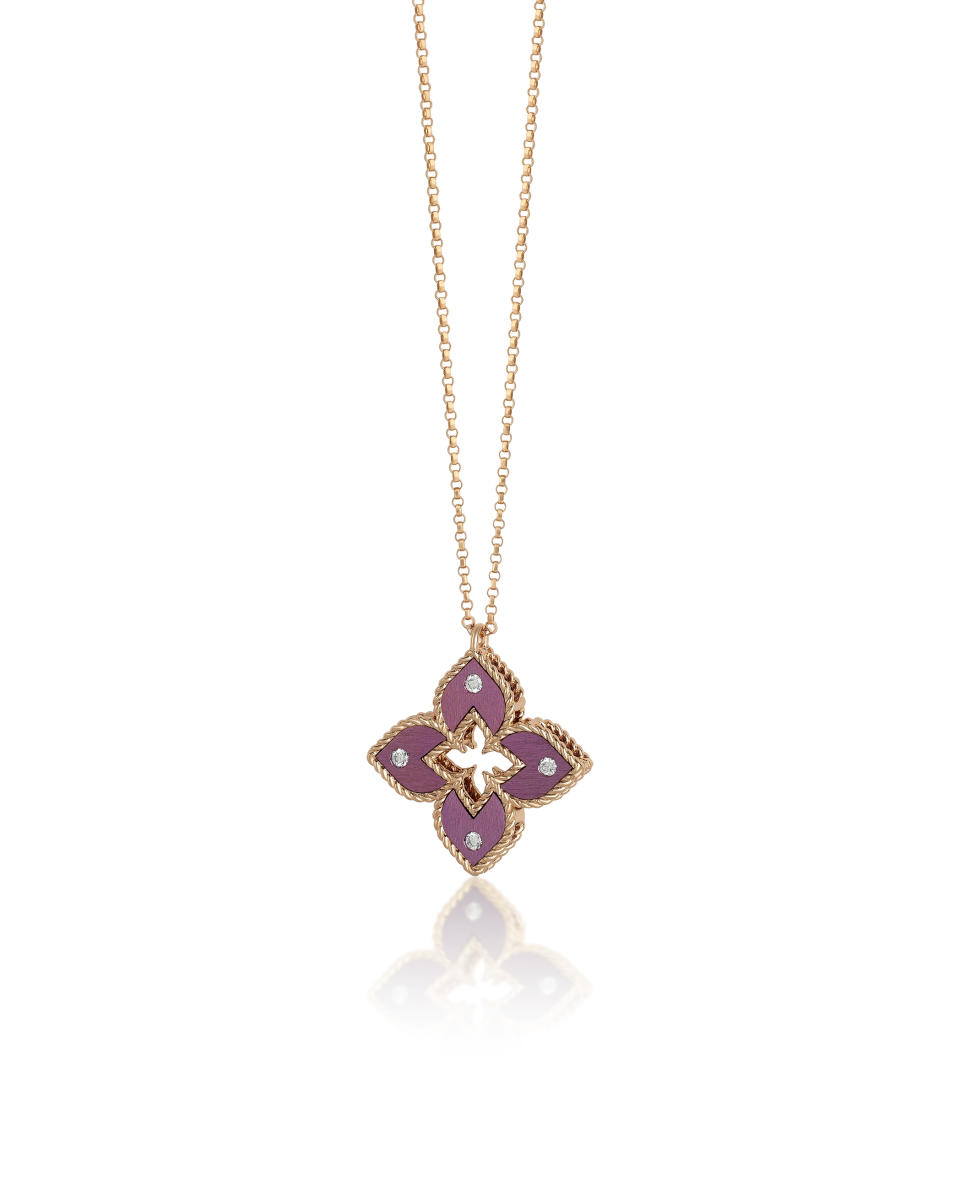
Branding is emerging as the most pressing business challenge. Damiani Group’s president Guido Damiani noted that there is strong demand for “branded jewelry,” which is generally underrepresented in the Italian sector.
This has allowed the group, which also owns the Salvini, Bliss and Calderoni jewelry brands, to invest in retail, another boon for the sector, with new stores opening in China for a total of 10 by the end of the year and in the Middle East, where the executive expects to open five new doors in six to eight months. Retail sales account for two-thirds of the company’s revenues.
Jewelry on show reflected the duality of the sector, with one-of-a-kind pieces and high jewels mingling with entry-price lines, smarter and affordable iterations catering to younger consumers. Little was left in the gray area in between, suggesting that the aspirational consumer who may buy, say, a 5,000-euro piece once a year was of relatively less importance for the about 1,200 exhibitors.
The publicly listed Gismondi 1754 recently acquired the Vendorafa Lombardi brand, previously controlled by LVMH Moët Hennessy Louis Vuitton’s watches and jewelry division, for more than 600,000 euros. The Genoa, Italy-based jeweler closed the first half of 2023 on an upbeat note, according to its chief executive officer Massimo Gismondi, and plans to chase double-digit growth in 2023 by tapping into underrepresented markets, including the Middle East — overall a strong focus for VicenzaOro’s exhibitors.
Mentioning geopolitical instability and inflation, Gismondi said the “forecast for the last quarter is not particularly rosy,” but he still expects the U.S., the company’s primary market, to stay on a roll and investments in the Middle East to pay back. Gismondi 1754 is opening its first franchised unit in Doha later this year, followed by a second door in 2024, to build on its network of seven monobrand boutiques.

Similarly, Giorgio Visconti’s CEO Andrea Visconti said that sales in the first nine months of the year slightly increased over the same period in 2022, hinting at positive prospects for 2023. The company, which had sales of 28 million euros in 2022, is looking to rebalance its exposure to Italy, which currently represents 70 percent of revenues. The aim is to tap into northern and eastern European countries, as well as Asia, with China, Japan and Malaysia top of mind.
He said the fair’s brisk business activity and footfall were encouraging signs on full-year prospects.
To be sure the trade show was on exceptional highs throughout the year, said show director Carniello. “We’re consolidating our role as one of the three main jewelry fairs globally, together with [the Couture Jewelry Show in] Las Vegas and [the Jewellery & Gem World in] Hong Kong, not only in terms of size but also authority. A lot of visitors come here not only to buy collections but also to understand prospects for the upcoming 12 to 18 months. Becoming a ‘trend show’ is pivotal,” he said.
Adding pressure on Italian jewelry brands are the roller-coaster prices for raw materials with gold reaching unprecedented highs, even surpassing the price of platinum, and gemstones, including diamonds, experiencing depreciation.
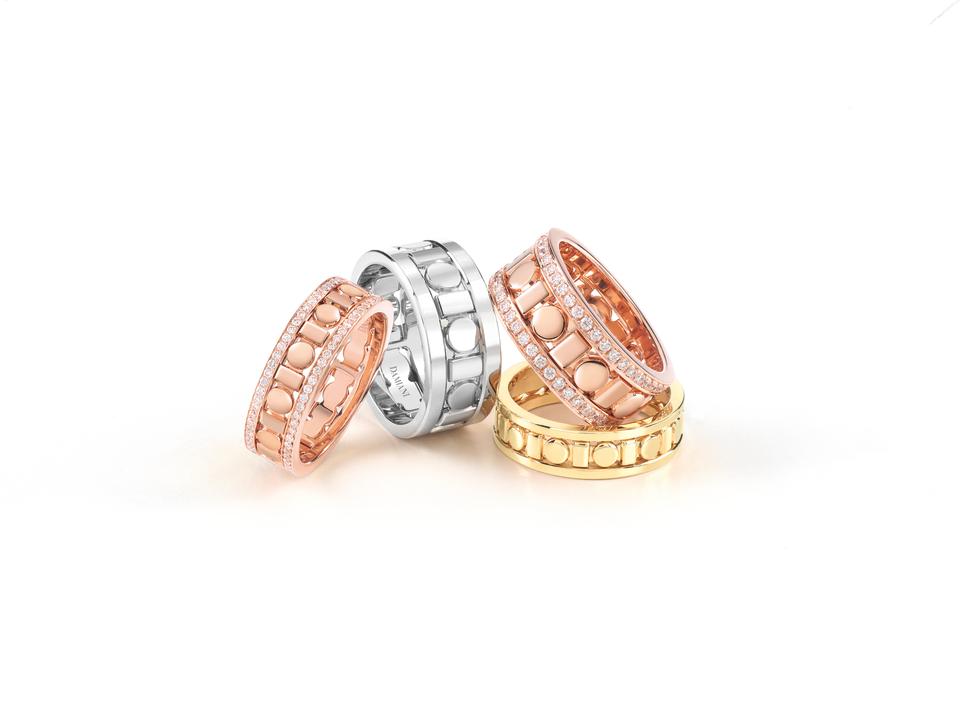
Against this backdrop it came as no surprise that alternative materials were under the limelight, with titanium appearing in the collections of several brands.
At Capri-based Chantecler, it served as the core to flamboyant, undersea-inspired creations, with enameled necklaces in the shape of life-size sea urchins and sea horses embellished with carnelian stones and baguette-cut diamonds. In Gismondi 1754’s Aura T collection, titanium replaced gold on the sinuously geometric bracelets and earrings defined by their concentric circles, while Roberto Coin’s Venetian Princess lineup was reengineered for rings and pendant necklaces with an anodized colored titanium flower-shaped body edged in gold and punctuated by tiny diamonds.
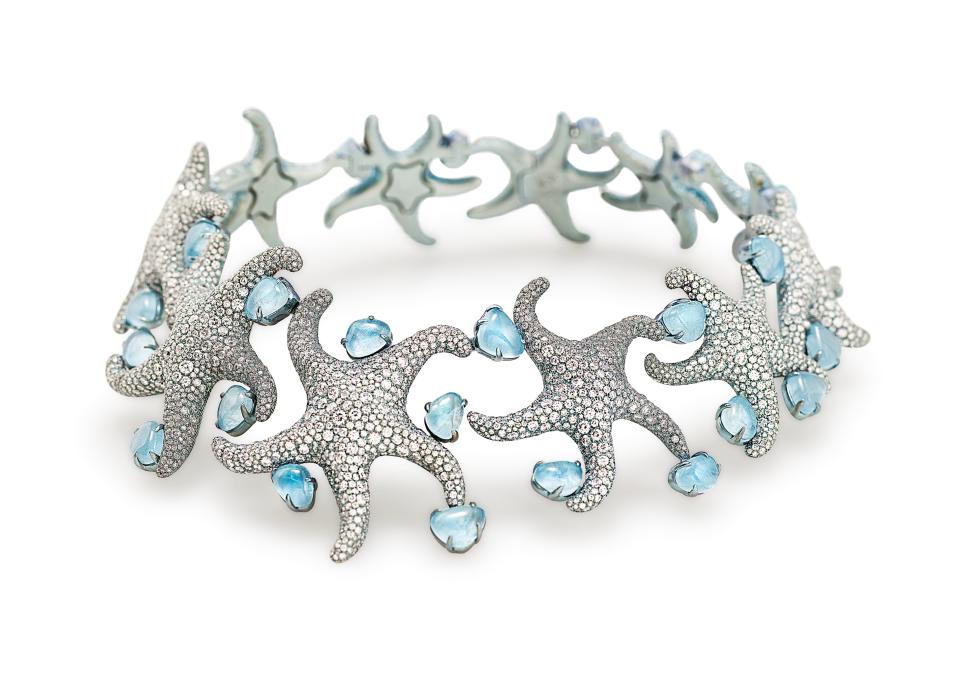
Ceramics popped here and there, for example in Salvini’s Eva range inspired by the serpent that convinced Eve to eat the fruit from the forbidden tree. Crafted from yellow, white and rose gold, oftentimes decked in diamond pavé, the collection comprised bracelets, bangles and rings, among other jewels, featuring a scarlet red, hybrid ceramic inside facet. It had a genderless connotation with a gold bangle capped with two serpent heads retailing for under 1,500 euros and tapping into younger jewelry enthusiasts.
In Gismondi 1754’s Genesi range, the swirling floral compositions were combined white ceramics and diamonds, or yellow gold and pink sapphires. The one-of-a-kind Vendorafa designs included a ceramic-embellished rendition of the Dune range, characterized by its uneven, faceted structured and signature hammered gold surface.
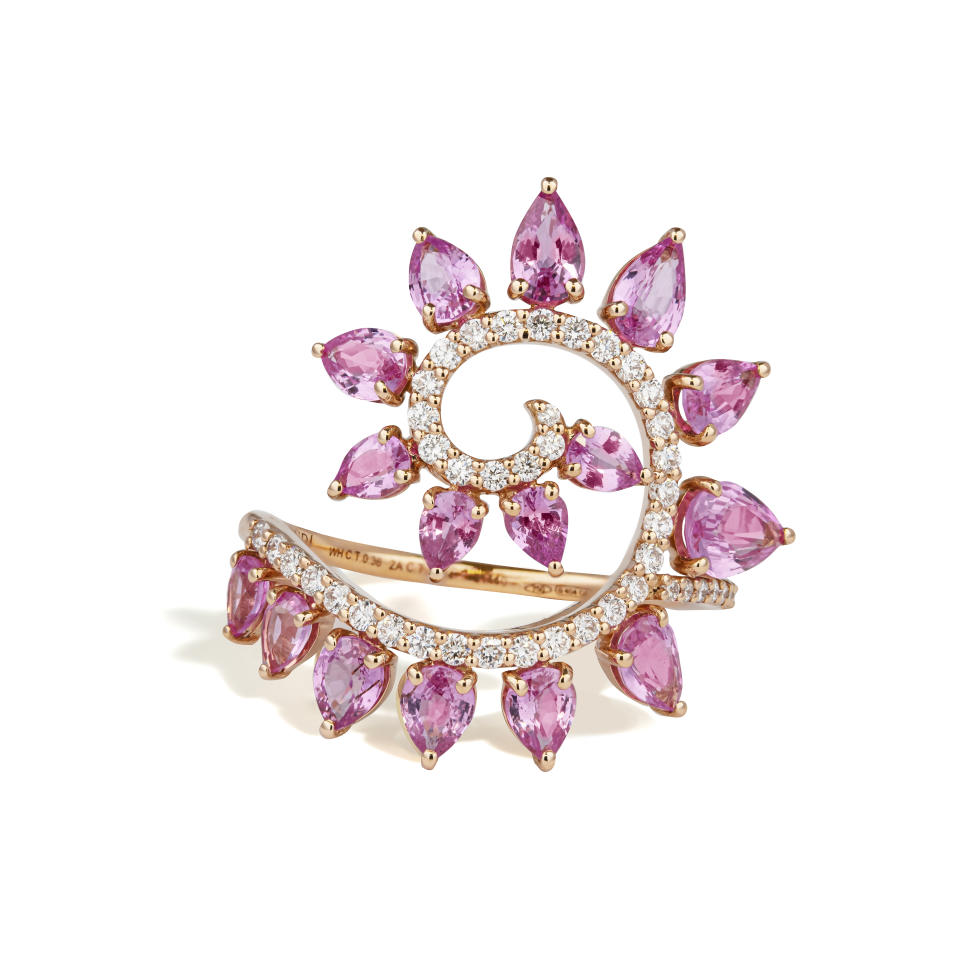
Together with fine jewelry pieces — Gismondi 1754’s Vita necklace featuring an almond-shaped 56.37-carat blue tanzanite stone wrapped and supported by four strings of white gold encrusted with 63.21 carats of diamonds was a real showstopper — jewelers at the fair showed their accessible side, too.
Chanteceler’s chunky marine jewelry mingled with new iterations of its Paillettes range, which represents 20 percent of the company’s turnover, by adding enamels and colored gemstones, as well as introducing a new family crest ring. Damiani’s Belle Époque Reel collection, a more accessible take on the signature Belle Époque collection, featured minimalist band rings, earrings and bangles with a decorative spin courtesy of circles and rectangles punctuating the pieces done in white, yellow and pink gold and enriched by diamonds.
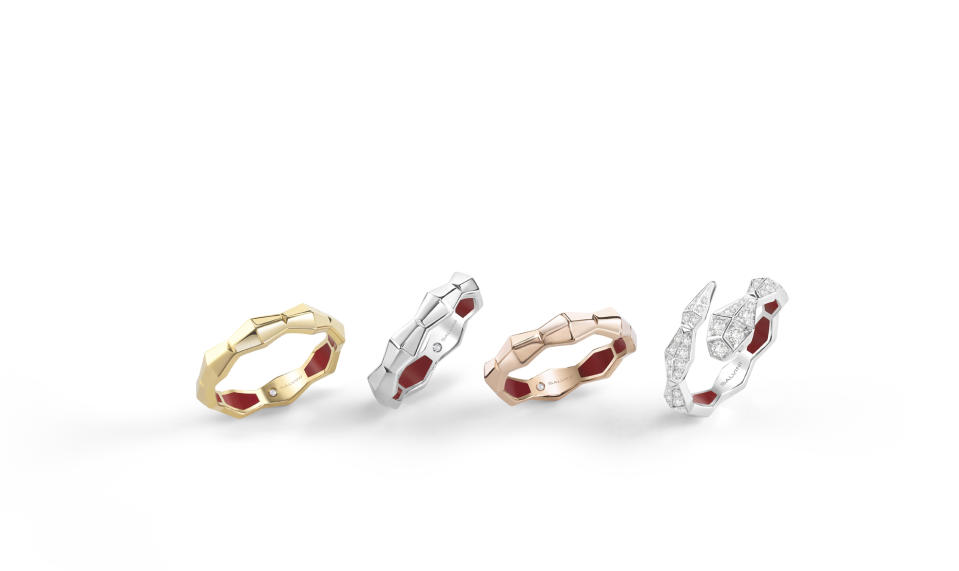
Similarly, Giorgio Visconti’s primary focus was the Io Luce lineup, inspired by the signature single diamonds often used as complementary earrings or as pendants. It represents the high jeweler’s more approachable collection and hero lineup, crafted from white and pink gold, and featuring a central diamond stone encircled by eight smaller ones contributing to brilliance.
The next edition of VicenzaOro will take place Jan. 19 to 23. It will kick-off the fair’s 70th anniversary celebrations. To mark the milestone, the show director said that the fair’s pavilions will be renovated next year.
Best of WWD


